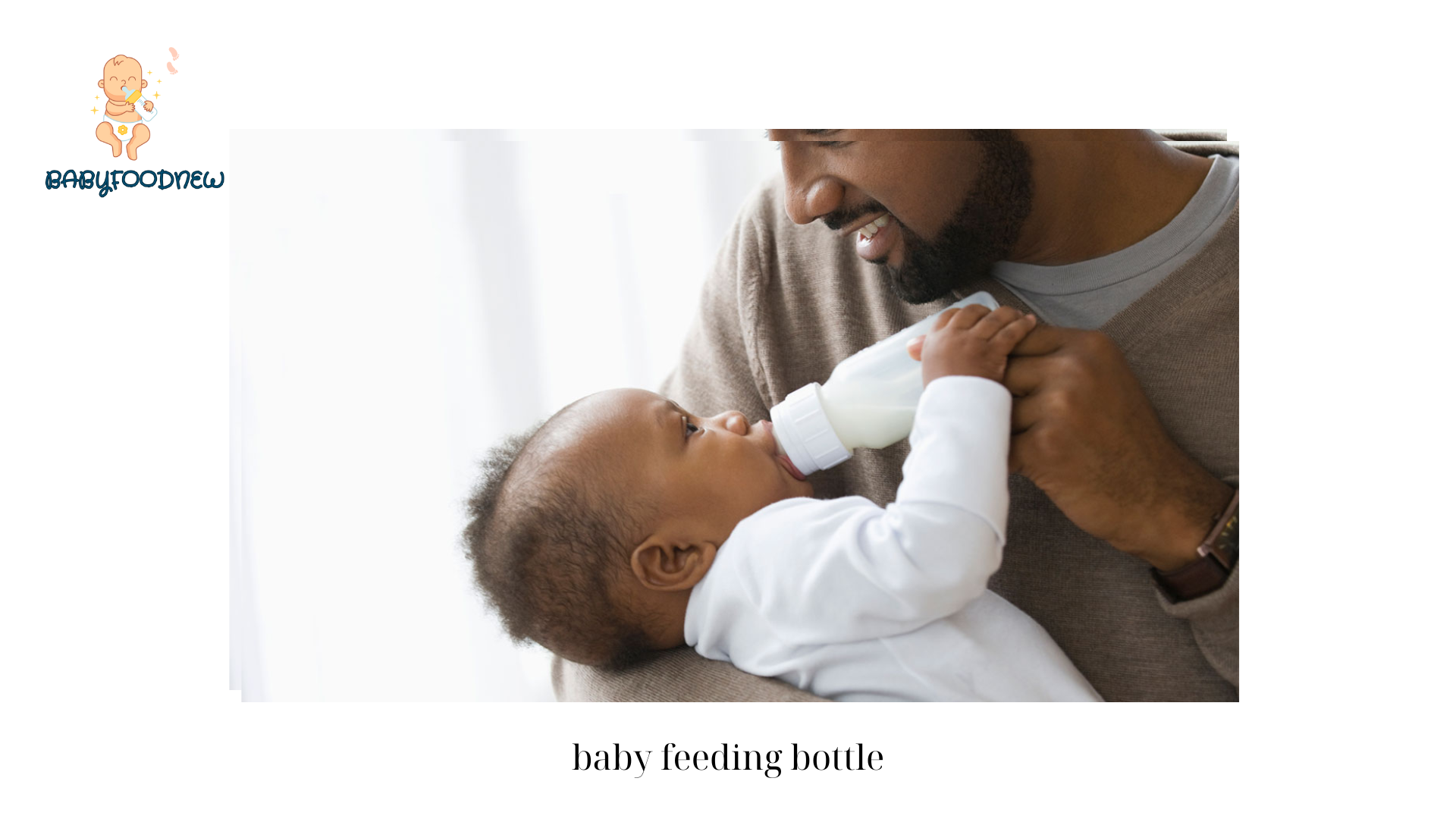Table of Contents
TogglePregnancy Calculator
When it comes to feeding your baby, finding the right tools and equipment is essential to the baby feeding bottle is a staple in every parent’s arsenal, providing a convenient and practical way to nourish your little one so this complete guide, we will explore everything you need to know about baby feeding bottles, from their types and features to tips on usage and maintenance. Whether you are a new parent or looking to upgrade your current bottle, this guide by Babyfoodnew will help you make informed decisions and ensure a positive feeding experience for your baby.
Exploring the Baby Feeding Bottle: A Complete Guide

- Understanding the Importance of Baby Feeding Bottles
Baby feeding bottles play a crucial role in providing nutrition to infants who are not exclusively breastfed. They offer a practical solution for parents who choose to bottle-feed their babies or supplement breastfeeding with formula. The design and functionality of modern feeding bottles have evolved to mimic the natural breast, making it easier for babies to latch on and feed comfortably. - Types of Baby Feeding Bottles
There are various types of baby feeding bottles available in the market, each with its unique features and benefits. The most common types include standard bottles, wide-neck bottles, and anti-colic bottles. Standard bottles are the traditional narrow-necked bottles, while wide-neck bottles offer a broader opening for easier filling and cleaning. Anti-colic bottles are designed to reduce the intake of air during feeding, minimizing discomfort and gas in babies. - Choosing the Right Size and Capacity
Baby feeding bottles come in different sizes and capacities to cater to the growing needs of babies. Smaller bottles with a capacity of around 4 to 5 ounces are suitable for newborns, while larger bottles with capacities of 8 to 10 ounces are ideal for older infants. Consider your baby’s age, feeding habits, and appetite when selecting the right size and capacity for the feeding bottle. - Materials Used in Baby Feeding Bottles
When choosing a baby feeding bottle, it is important to consider the materials used in its construction. The most common materials include plastic, glass, and stainless steel. Plastic bottles are lightweight and durable, while glass bottles are free from potentially harmful chemicals and are easier to clean. Stainless steel bottles offer excellent durability and insulation properties. - Nipple Options and Flow Rates
The nipple is a crucial component of the baby feeding bottle as it determines the flow of milk or formula. Nipples come in different shapes, sizes, and materials. Silicone and latex are the two main materials used in nipples, with silicone being more durable and latex providing a softer, more natural feel. Nipples are also available in different flow rates, ranging from slow to fast, to accommodate the baby’s feeding pace and age. - Sterilization and Cleaning
Proper sterilization and cleaning of baby feeding bottles are essential to maintain hygiene and prevent the growth of harmful bacteria. There are several methods for sterilizing bottles, including boiling, steam sterilization, and chemical sterilization. Regular cleaning with warm soapy water and using a bottle brush to reach all areas of the bottle is crucial to remove milk residue and ensure cleanliness. - Introducing the Feeding Bottle to Your Baby
Introducing a feeding bottle to your baby requires patience and a gradual approach, especially if they are used to breastfeeding. Start by offering the bottle during relaxed and calm moments, allowing your baby to explore and familiarize themselves with the bottle’s nipple. It may take time for your baby to adjust, so be patient and provide gentle encouragement throughout the process.

- Feeding Techniques and Tips
Feeding your baby with a bottle requires certain techniques to ensure their comfort and safety. Hold your baby in an upright or semi-upright position to minimize the intake of air. Tilt the bottle at an angle that allows the nipple to be filled with milk or formula, preventing excessive air intake. Burp your baby periodically during feeding to relieve any trapped air in their stomach. - Signs of Bottle-Feeding Problems
While baby feeding bottles are generally safe and convenient, it is important to be aware of any signs of feeding problems. Excessive fussiness, difficulty latching, frequent spitting up, or signs of discomfort may indicate issues with the bottle or the feeding technique. If you notice any persistent problems, consult with your pediatrician to address the underlying causes and find suitable solutions. - Transitioning to Sippy Cups
As your baby grows, they will eventually transition from a bottle to a sippy cup. This process usually happens around the age of six to nine months when they start exploring solid foods. Introduce a sippy cup gradually, alongside the bottle, to help your baby adapt to the new drinking method. Offer water or diluted juice in the sippy cup, gradually reducing the reliance on the bottle.
Conclusion

Baby feeding bottles are a practical and indispensable tool for parents who choose to bottle-feed their infants. By understanding the various types, sizes, and materials available, you can select the right bottle to suit your baby’s needs. Proper sterilization, cleaning, and feeding techniquesensure hygiene and a comfortable feeding experience. Remember to monitor your baby for any signs of feeding problems and consult with a healthcare professional if needed. As your baby grows, be prepared for the transition from a bottle to a sippy cup. With the information and tips provided in this complete guide, you can confidently navigate the world of baby feeding bottles and make informed choices that contribute to your baby’s health and well-being.
Related Posts:
- Where to Donate Baby Food: Finding the Right…
- Baby Nutrition App: Your Guide to Nourishing Your Little One
- Baby Feeding Essentials: Must-Have Products for New Parents
- Baby Food Mesh Feeder: Introducing Solid Foods…
- How to Get Food Coloring off Baby Skin: Effective…
- Best Books on Baby Nutrition: A Comprehensive Guide…


